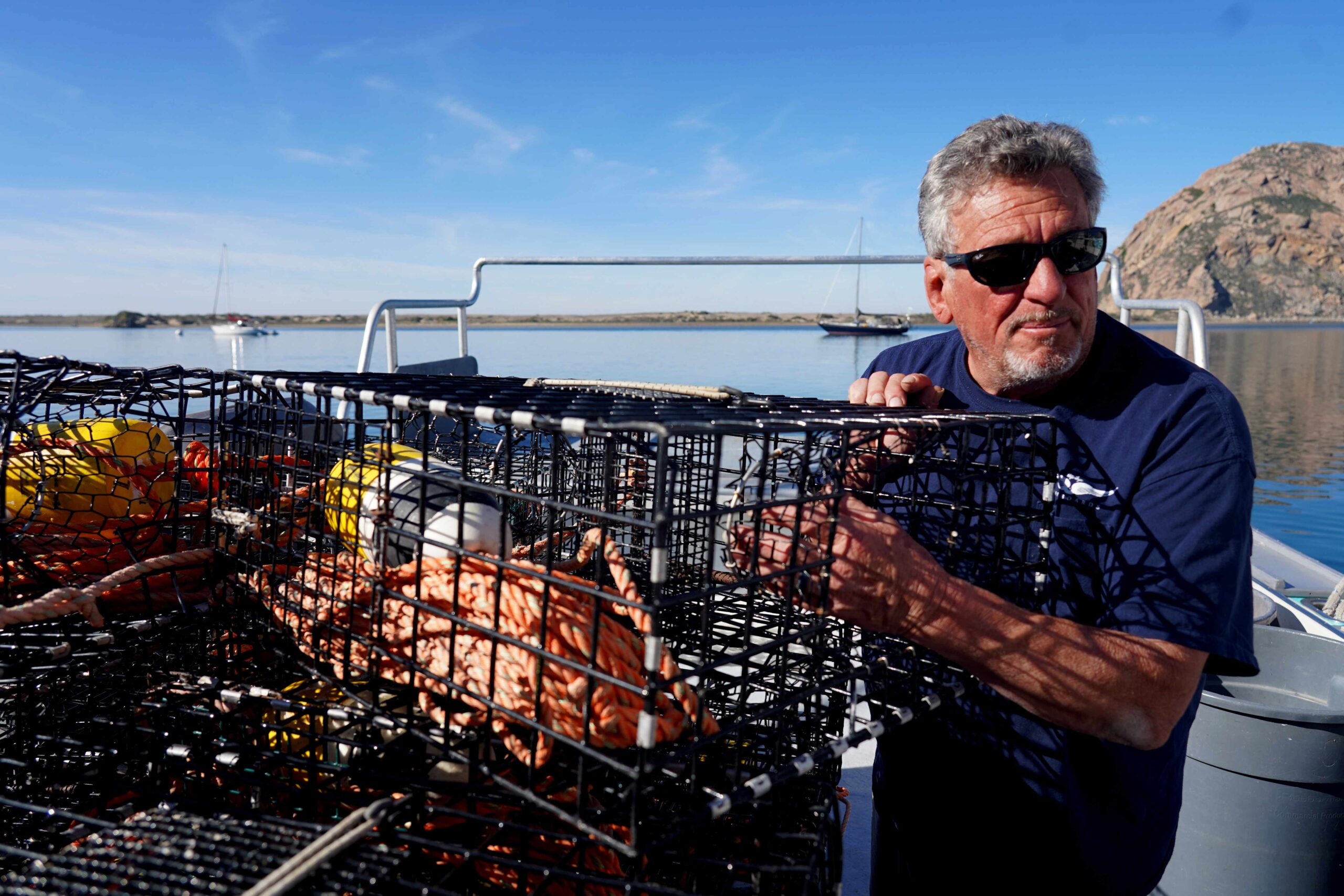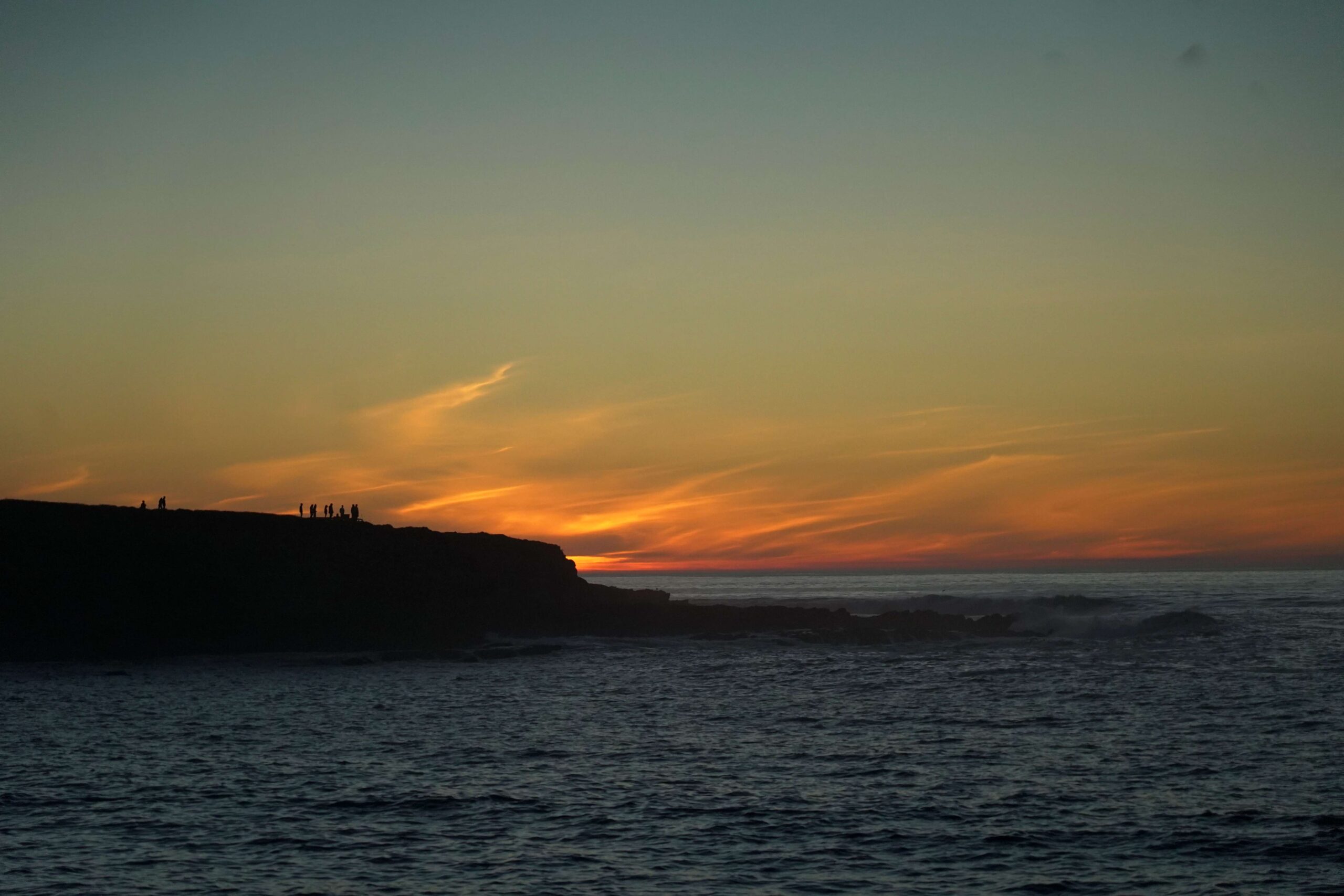In the Morro Bay Harbor, a California sea otter reclines, belly-up, on the sun-soaked waves. She yawns, stretches, and closes her eyes against the bright morning light – though every once in a while, she breaks her lazy reverie when a human coos hello.
The otter is leisurely. Comfortable. And unaware that the waters beneath her are a site of local contention.
For decades, communities across central California have fought – both for and against – the creation of the Chumash Heritage National Marine Sanctuary. If designated, the sanctuary would become the sixteenth in a network of federally protected waters, stretching across 7,000 square miles of ocean and 156 miles of coastline. It would fill the gap between the Monterey Bay Sanctuary to the north and the Channel Islands Sanctuary to the south, encompassing the majority of California’s waters within the sanctuary system.
The Northern Chumash Tribal Council nominated the area to become a national sanctuary in 2015. After years of idling on a consideration list, the National Oceanic and Atmospheric Administration (NOAA) began the designation process at the end of 2021.

Advocates – including the Chumash, marine experts, and Senators Alex Padilla and Dianne Feinstein – say the sanctuary would recognize thousands of years of Chumash tribal history while protecting an area of significant marine biodiversity. It would also bring jobs, proponents say, and attract money for research, from tourism, and toward climate change mitigation.
But opponents – including those from the fishing industry, the agricultural industry, and the cities of Morro Bay and Pismo Beach – feel the sanctuary could damage the livelihoods of those working on the coast. Some don’t trust the sanctuary’s promise to not regulate fishing, claiming that – even with similar mandates – sanctuaries have used their standing to influence “no take zones” across the state, where extractive activities are prohibited.
On January 31, 2022, the scoping process for the Chumash Sanctuary closed with nearly 23,000 comments from the public, completing the first of four steps in the designation process. And as NOAA works through these comments, to many, it feels like the central coast’s future is dangling in limbo.

“The most important thing I will have ever done”
Violet Sage Walker didn’t start the battle for the Chumash Heritage National Marine Sanctuary. But when her father, the sanctuary’s original nominator, passed away last fall, taking over the task felt like something she couldn’t refuse.
“Three days before my dad died, he said to me: This is the most important thing I will have ever done in my life,” said Walker, chairwoman of the Northern Chumash Tribal Council. “That’s a heavy thing for me to carry. But I do.”
Sacred Chumash sites dot the Central Coast. As sea levels rose, most of those areas were submerged by the water. Others, like the nearly 600-foot-tall Morro Rock, still loom over communities from Cambria to Gaviota. As the country’s first tribally nominated sanctuary, Walker hopes the designation could preserve Chumash history while protecting the wildlife within.
The site of the proposed sanctuary is also home to an ecological transition zone, where warm water from the south meets cold water from the north. Many endangered species, like blue whales and leatherback sea turtles, use the waves beside central California as a giant, winding freeway, traveling alongside hundreds of species of fish and other animals on their annual migrations.

From the beginnings of Chumash tribal history until today, communities across the region have built their lives around the ocean. But with the increase of industrialization along the coast, Walker and others are worried that coexisting with the coastline could be in jeopardy.
“Being situated between two national marine sanctuaries, we’ve always been keenly aware of the benefits of having a sanctuary and the perils of not having one,” said Andrew Christie, the director of the Santa Lucia Chapter of the Sierra Club. “If you have sanctuaries directly to your north and south, oil companies see you as the hole.”
In 2019, the Trump Administration opened up California’s coastline to new oil and gas drilling. In 2021, a broken pipeline in Orange County leaked 126,000 gallons of oil into the water. And according to Christie, there are about 20 known oil fields off the San Luis Obispo Coast.
With national marine sanctuaries prohibiting most offshore exploration, drilling and leasing, their designation is attractive to those hoping to end oil extraction in the area, along with those who hope it will bring research and federal monitoring programs to track the ocean’s health.
But for others, even these benefits come at an unbearable cost.
Fear grown from years of distrust
As Tom Hafer steps aboard his boat, the Kathryn H, he is welcomed by a chorus of seals beyond the harbor. Their loud, sharp barks punctuate the air – but Hafer, like many of the longtime fishermen on the dock, barely notices a thing.

As an independent commercial fisherman and president of the Morro Bay Fishermen’s Organization, Hafer is a prominent voice in the industry. He feels the Chumash Heritage National Marine Sanctuary could use its influence to push for restrictions across the central California coast, claiming that was exactly what had happened with the Monterey Bay National Sanctuary.
In 2012, that sanctuary voiced support for a state program to implement marine protected areas, a more restrictive type of designation where fishing may be prohibited. Separate from sanctuaries, marine protected areas (or MPAs) are part of a statewide conservation initiative with different levels of allowable extraction. By pushing for MPAs, Hafer and many other fishermen feel the sanctuary breached its original promise of not regulating fishing within its boundaries.
Today, there are 29 MPAs along the central coast.
Lisa Wooninck, the superintendent of the Monterey Bay National Marine Sanctuary, said that though they voiced their support for the proposal, ultimately, that decision was up to the state.
“We gave [the state] our advice,” said Wooninck. “We could have also been silent – maybe that’s what they wanted. But they put a lot of stock in that we had an opinion.”
Representatives from NOAA agree that the sanctuary has a right to involve itself in issues within their boundaries. Though they don’t regulate fishing directly, they may get involved related topics for the good of the sanctuary, said Paul Michel, the regional and policy coordinator at NOAA Sanctuaries West Coast Region.

Alan Alward, co-chair of the Alliance of Communities for Sustainable Fisheries, feels that the processes in Monterey excluded fishermen from participating in the decisions that would affect them, particularly within that sanctuary’s advisory council. As a result, he said, they’ve lost say in their own operations. He worries the same will happen with the Chumash sanctuary.
“There’s a lack of trust, and we don’t feel like we’re going to get an honest shake with them based on repeated history with the Monterey Sanctuary,” said Alward. “What we’ve come to find out is they don’t believe it’s part of their job to be truthful with the fishermen.”
Though an analysis from the Northern Chumash Tribal Council found 99% of public comments were in favor of the sanctuary, Hafer and Alward are not alone in their opposition. Those against the sanctuary include the Morro Bay Chamber of Commerce, the Morro Bay City Council and the City of Pismo Beach, all of whom fear the sanctuary could impact fishing, agriculture, and other oceanic operations.
What could be brought, and what could be lost
Across the coast, there is a mismatch between what could be brought – and what could be lost – if the Chumash Heritage National Marine Sanctuary is designated. While fishermen fear an increase in regulations, others, like Northern Chumash Bear Clan Elder Michael Khus, feel the sanctuary could breathe life back into his community’s relationship with the sea.
“As far as tribal people are concerned, it gives us an opportunity to help revive our culture and bring our children up with this access – a magnet back to the water,” Khus said. “We can use the marine sanctuary as a way to offer our people something valuable to them: the same fish, the same wildlife, that we’ve enjoyed for generations.”

In 2014, the Sierra Club funded a study into projected economic impacts of a sanctuary on the central coast. Researchers found that such a sanctuary could add $23 million per year to the local economy, along with 600 new jobs. NOAA also reports that sanctuaries have high economic value for their communities: in 2014, the agency reported recreation activities in Washington’s Olympic Coast National Marine Sanctuary resulted in $101.6 million in spending on sanctuary’s coast, supporting 1,192 jobs in the area.
At the same time, Hafer, Alward and other fishermen are anticipating the exact opposite. Though the Northern Chumash Tribal Council are adamant that this sanctuary would not restrict fishing, Hafer and Alward point to proposals from organizations like the California Biodiversity Council, which is urging the sanctuary to require ropeless fishing gear on those working within its boundaries. Such restrictions, Hafer and Alan argue, would be devastating for the industry, requiring fishermen to invest in equipment so costly that some could be shuttered from the harbor.

For PJ Webb, legal advisor of the Northern Chumash Tribal Council, these proposals are not synonymous with the designation of the sanctuary.
“I want them all to learn what a sanctuary really is,” said Webb. “The basis of a national marine sanctuary is protecting the water quality, and that benefits all of the stakeholders. Our nomination asks for no restrictions for fishing within the national marine sanctuary, and frankly, the national marine sanctuary’s purview and jurisdiction is not fishing regulations.”
A coastline in question
With the close of the public comment period, NOAA is now entering the second stage of the designation process: proposal drafting. Over the coming months, the agency will prepare a draft legislation, management plan, and environmental impact statement. Over the next two years, they will decide if – and how – a sanctuary would be formed.
Until then, communities across the coast will be waiting, for better or for worse.
“In the end, those things that people enjoy so much about the ocean: the fish, the beautiful day on the beach, the sailing, the motoring…they all depend on a healthy sanctuary,” said Wooninck. “So how can we find those places and those options where we can have some of their [the fishermen’s] use, but still protect the core?”
This story was produced with support from Zoe Bartel.
